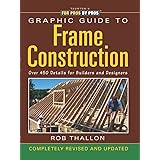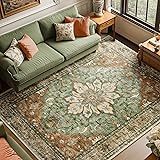Are you about to embark on the exciting journey of decorating your new home? While transforming a house into a personalized sanctuary is incredibly rewarding, it’s also easy to stumble into common decorating mistakes. These pitfalls can disrupt the harmony and functionality of your space, leading to frustration and potentially costly re-dos. The video above has highlighted eight crucial errors many homeowners make.
This accompanying guide delves deeper into these interior design blunders. We will expand on each point, offering actionable insights and practical strategies to help you navigate the complexities of home decor. By understanding these common missteps, you can avoid them from the very start, ensuring your new home truly reflects your vision and lifestyle.
1. The Foundation: Not Envisioning Your Entire Home
One of the most significant decorating mistakes is diving into purchases without a cohesive plan. It’s not about having every single detail finalized, but rather establishing a clear design concept or mood board. This initial step acts as your guiding compass, ensuring all your choices contribute to a harmonious and unified aesthetic across your home.
To begin, consider creating a design board, whether physical or digital. Platforms like Pinterest are excellent for gathering inspiration, allowing you to pin images that resonate with your desired style. However, a crucial caveat is to pin for the home you *actually* have, not the one you fantasize about. Curate your selections carefully, moving from aggressive pinning to a more refined collection of ideas. This approach prevents you from getting swayed by trends that won’t suit your specific living situation.
Beyond aesthetics, a holistic vision includes understanding the functional needs of each space. The video rightly emphasizes three key questions: “Who is using this space?”, “What are they doing there?”, and “When are they using this space?” For instance, a family living room used daily will have different requirements than a formal dining room used only for special occasions. Considering these aspects helps inform furniture choices, layout, and even durable finishes. Tools like Milanote, as mentioned in the video, are invaluable for organizing these complex thoughts, allowing you to visually plan layouts, inspiration images, and functional requirements on a digital canvas. This comprehensive planning phase is the bedrock of successful interior design, preventing disparate choices and fostering a truly integrated living environment.
2. The Pace Problem: Rushing the Decorating Process
Moving into a new place often comes with an unspoken pressure to have everything perfectly styled within weeks. Social media often perpetuates this myth, showcasing seemingly instant home transformations. However, the reality is that the most beautiful and personal homes are curated slowly, evolving over time. Rushing through the decorating process is a common misstep that often leads to regrettable purchases and a lack of authentic style.
Slow decorating offers numerous advantages. Firstly, living in a space for a while reveals its true character and how you genuinely use it. A spare bedroom initially designated as a home office might, after a month, prove to be a better guest bedroom, with your office more ideally suited upstairs. If you had rushed to buy office furniture immediately, you’d likely face buyer’s remorse and the hassle of returns. Secondly, a hasty approach often leads to purchasing trendy decor that quickly becomes dated. These “fast decor” items might offer instant gratification but lack the timeless appeal and personal narrative that a slowly curated collection provides. Instead, embrace the journey of discovery, allowing your home to reflect your evolving tastes and experiences.
3. Furniture Faux Pas: Buying All at Once or From One Store
Following on from the previous point, a classic mistake, especially for first-time homeowners or those upgrading to a larger property, is purchasing all furniture simultaneously. The temptation to fully furnish an empty house is understandable; a partially furnished home can feel unappealing. However, this rush often brings more drawbacks than benefits, compromising both your budget and your home’s unique character.
Buying everything at once typically leads to overspending, as you’re less likely to seek out deals or explore diverse retailers. This urgency can also result in missed opportunities for unique finds—be it a vintage side table from a local market or a handcrafted piece from an independent artisan. Moreover, hasty furniture acquisition often results in a lack of cohesion. Pieces might not blend seamlessly, creating a disjointed rather than harmonious look. Conversely, buying entire sets from a single store can lead to the opposite problem: a space that feels overly “matchy-matchy” and devoid of personality. The key lies in strategic, thoughtful purchases. Mix and match styles, textures, and origins. Combine a sleek, modern sofa with a vintage coffee table, or complement new dining chairs with an antique credenza. This creates depth and character, telling a story about the home’s occupants rather than a single shopping trip.
4. Color Conundrums: Skipping Sample Testing
Neglecting to test colors and samples thoroughly is a frequent decorating mistake, applicable to everything from upholstery to curtains, but most critically, to paint. Relying solely on tiny swatches from hardware stores is a recipe for disappointment. These swatches are often ink-printed and can look vastly different from the actual paint color once applied to a wall.
The best practice is to acquire sample pots of your top paint choices. Instead of painting directly onto your walls, which can be deceiving if your current wall color isn’t pure white, paint these samples onto white foam boards or large A4-sized real paint samples. This method allows you to move the sample around the room. Observe how the color shifts in different locations and at various times of the day, paying close attention to the light during the hours you spend most in that room. Artificial lighting also significantly impacts color perception; ensure your light bulbs’ color temperature is in place during testing. Furthermore, external factors like abundant greenery outside a window can cast a greenish hue on a pale paint color. Bringing your samples to different spots helps account for these environmental influences. Regarding the order of selection, it’s generally advised to choose your primary furnishings first, then select paint. With thousands of paint hues available, it’s far easier to find a paint color that complements your furniture than the other way around. Once chosen, paint the room before the furniture arrives for a cleaner, more efficient process.
5. Fixed Finish Failures: Ignoring Context
When selecting or updating fixed finishes—such as tiles, cabinetry, flooring, and countertops—a common decorating mistake is considering each element in isolation. This siloed approach often leads to a kitchen or bathroom lacking cohesive elements, with finishes that clash rather than complement each other. Retailers frequently promote trendy individual items, but what’s trending in cabinetry might not align with current tile trends. Displays in big box stores, sometimes haphazardly combining trendy finishes for inspiration, can further mislead homeowners.
A better strategy involves viewing your finishes as a collective. The secret lies in understanding and working with the undertones of your materials. For instance, if you’ve chosen a cool turquoise paint, it will harmonize better with white cabinetry and a cool gray marble countertop. Conversely, pairing it with warm-toned cabinets and a brown countertop can result in a discordant look. Consider the overall palette you wish to create: do you want a warm, inviting space or a cool, serene one? This decision should guide your selection of undertones across all fixed elements. Before committing to costly installations, gather samples of all your chosen finishes—flooring, cabinetry, countertops, and tiles—and lay them out together. This allows you to visualize their interaction under various lighting conditions. This holistic approach ensures your permanent installations create a unified and aesthetically pleasing foundation for your entire home design.
6. Wall Woes: Overfilling Your Walls
The anxiety of empty walls is a universal experience for new homeowners, often leading to the decorating mistake of overfilling. While art, mirrors, shelves, and sconces undoubtedly complete a room, knowing the “where,” “how much,” and “why” behind their placement is paramount. A wall doesn’t necessarily need something on every square inch. In fact, too much visual information can cause elements to compete for attention, preventing any single piece from truly shining.
Your eyes, much like in a well-composed artwork, need moments of rest. Negative space on a wall is a design element in itself, allowing key pieces to breathe and command focus. To begin, identify the focal point of the room. This could be a fireplace, a large window, or a prominent piece of furniture like a sofa. Artwork or a gallery wall often serves as a natural anchor above a sofa, preventing the space from feeling “bottom-heavy.” Similarly, a credenza or console table benefits from a mirror or artwork above it, adding height and drawing attention to the curated display below. For empty corners, a strategically placed tall plant or a single, impactful piece of art can define a reading nook or add visual interest without clutter. Experimentation is key, but always start with a clear reason for why something is being placed. This thoughtful approach transforms walls from mere surfaces into dynamic components of your interior design, creating an intentional and visually appealing environment.
7. Architectural Oversight: Neglecting Your Home’s Unique Character
A common decorating mistake is to forge ahead with a predetermined style without considering your home’s inherent quirks, architectural style, or surrounding environment. Ignoring these foundational elements can result in a jarring, incoherent look that feels out of place. Every home possesses a unique character, whether it’s a historic bungalow with intricate millwork or a modern loft with clean lines. Trying to impose a style that clashes with this existing framework can undermine the home’s natural charm.
For example, trendy slatted panels, while beautiful in a contemporary setting, might look incongruous in a traditional home adorned with classic moldings. The key is to acknowledge and appreciate your home’s architectural language. Research its period and typical design features. This doesn’t mean you can’t infuse your personal style; rather, it’s about blending your preferences respectfully. Furthermore, your home’s environment offers rich inspiration. A beach house might draw on hues of white, blue, and sand, creating a seamless transition from indoors to outdoors. A home surrounded by lush greenery could benefit from natural elements like wooden furniture and deep green accents, fostering a harmonious atmosphere. By understanding and working *with* your home’s existing features and its surroundings, you create a more authentic, cohesive, and visually pleasing interior. This mindful approach ensures your decor feels integrated, rather than simply placed within the space.
8. Dream vs. Reality: Decorating for the Home You Wish You Had
Another prevalent decorating mistake is designing for a dream home rather than embracing the space you actually inhabit. It’s easy to fall into the trap of replicating stunning images from magazines or aspirational Airbnbs. However, this approach often leads to frustration, as it overlooks the unique features and practical limitations of your current space. While it’s wonderful to have a “dream home” folder for inspiration, it’s essential to distinguish between what is feasible now and what belongs in future aspirations.
For instance, while picture frame molding might be captivating in a grand, historic property, it might not suit a cozy cottage-style home. Attempting to force a vast, open-plan loft aesthetic into a Victorian townhouse is likely to result in disappointment. The solution is to create two distinct categories for your inspiration: one for what is achievable and relevant to your current home, and another for your long-term dream home. This allows you to cherish your broader inspirations without trying to shoehorn them into an unsuitable context. Alternatively, learn to extract the essence of your dream elements and adapt them. If you love shiplap, but a full shiplap living room feels wrong for your suburban home, perhaps incorporate it on a single bar cabinet or a feature wall. This clever adaptation allows you to infuse elements of your desired aesthetic in a way that is respectful and appropriate for your existing space, ultimately creating something uniquely yours and avoiding common decorating mistakes.











